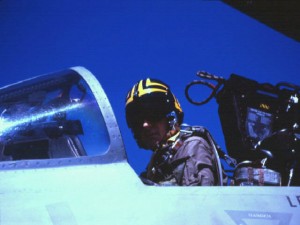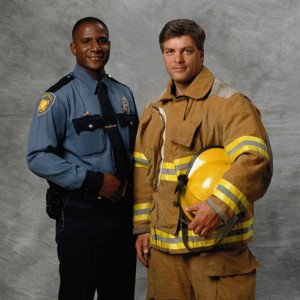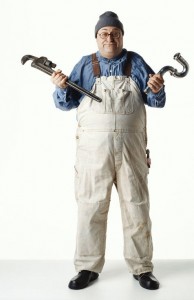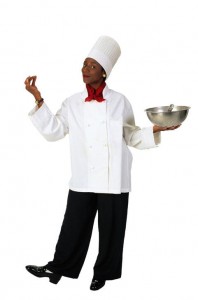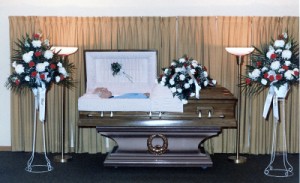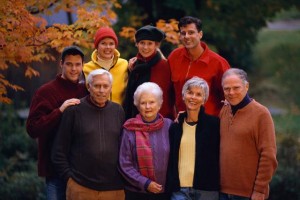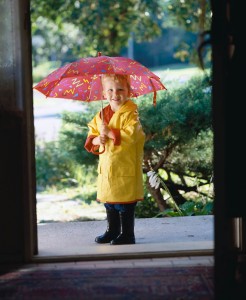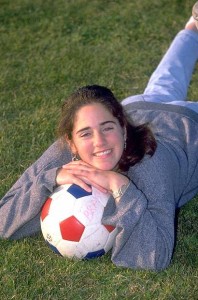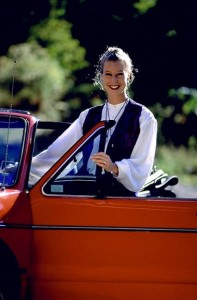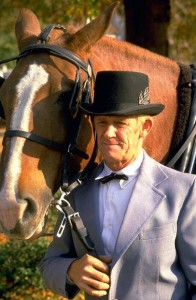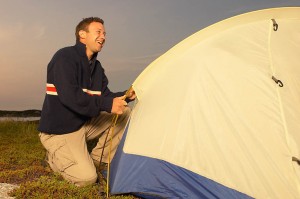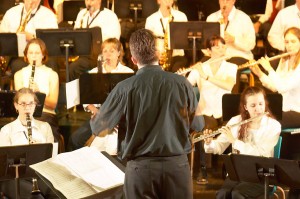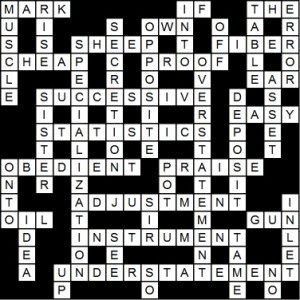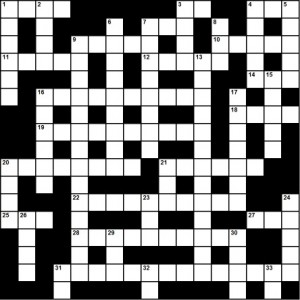
1. What type of building is this picture probably taken in?
This picture was probably taken inside a house.
2. How would you get in and out of this building?
You would get in and out of this building using a door – either the front door, or the back door.
3. What kind of room do we see in this picture?
In this picture we see a living room.
4. What might you do in this kind of room?
In a living room we might relax: read a book, watch TV, talk with friends, or enjoy a hobby.
5. Where could you sit down in this room?
In this room you could sit down on a sofa (couch) or a chair.
6. What other type of furniture might be found in this room?
Other types of furniture that you might find in this room could be a futon, a table, a coffee table, a bookcase, a china cabinet, or an ottoman.
7. What do you see on the floor of this room?
We see a rug on the floor of this room.
8. What could you have in this room if you wanted to know what time it was?
If we had a clock in the room, we would be able to know what time it was.
9. What could you do if you needed more light in this room?
If we needed more light, we could turn on a lamp. We could also let more light into the room by opening up the curtains or drapes.
10. What could you do if you needed more heat in this room?
If we needed more heat, we could turn up the thermostat. We could also light a fire in the fireplace, if the room has one.
11. What could you do if you wanted to have fresh air in this room?
If we wanted to have some fresh air in the room, we could open up the windows. We could also open up the doors.
12. What could you do if you wanted to decorate this room?
If we wanted to decorate the room, we could put things on the walls, like pictures or wall hangings. We could also paint the walls, or put up some wallpaper.
13. What other rooms might this building have?
Other rooms that a house might have would be a kitchen, a bedroom, and a bathroom. Some houses might also have a basement or an attic.
14. What do you call the small room where you can store your clothes?
The small room where you can store your clothes is called a closet.
15. What do you call the room where you can sleep?
The room where you can sleep is called a bedroom.
16. What do you call the room where you can wash up and brush your teeth?
The room where you can wash up and brush your teeth is called a bathroom.
17. What do you call the passageway that connects rooms to one another?
The passageway that connects the rooms in a house or apartment is called a hall(way).
18. What kinds of storage rooms might there be in this building?
Other storages rooms that a house might have would be a basement, an attic, or a pantry.
19. Where else could you put or display dishes or other items such as knickknacks or souvenirs?
If you want to display dishes, knickknacks, souvenirs, or the like, you could put them in a china cabinet, a corner cabinet, or a curio cabinet.
20. What kind of table might be suitable for serving an afternoon coffee or tea?
A coffee table would be a good place to serve afternoon coffee or afternoon tea.
Paragraph: Around the House
Write a brief paragraph about your home. Do you live in a house, or an apartment? Is it large, or small? How do you decorate it? In what room of your house/apartment do you spend most of your time? What sort of features would your “dream house” (ideal house/apartment) have?
When I was growing up, I lived in a house. It was a ranch house (one story) built on the side of a hill. It was an average-sized house, neither extra big nor extra small. The house had three bedrooms and one bedroom, connected by a hall. Each bedroom had a closet and two windows, except for the middle bedroom, which had only one window.
The house also had a kitchen. The kitchen had plenty of counter space, and was large enough for a kitchen table. However, if the family came over for a holiday dinner, we had to set up a spare table in the living room, because there was not enough space in the kitchen.
The living room was the main room of the house. Most of our time was spent there. In the living room we had a fireplace, a piano, my brother’s fish tank, and the TV. The living room had a set of six windows, which looked out over the hill and the road. Across the road was the river, and in the winter time when the leaves were off the trees, we could get an unobstructed view of the river.
The house also had a basement and an attic. In the basement was the garage, along with the washing machine, the dryer, and a spare refrigerator. We also stored our bicycles, sleds, skates, and other outdoor toys in the basement. The basement was unfinished, and much cooler than the rest of the house, especially in the summer. In the attic we stored off-season clothes, old books and toys, and other seldom-used items, such as a spare roll-away bed. The attic didn’t have windows, but at either end of the attic were a couple of screened openings for ventilation. In the summertime, the attic became especially hot, much hotter than the rest of the house.
I was in college when my parents sold the house. That made me sad, because it was the house I grew up in, and I had many happy memories there.
Google





